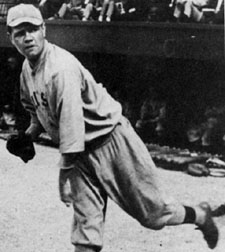On This Day in History, February 6: All Hail ‘The Sultan of Swat’

“Babe” Ruth was born George Herman Ruth in Baltimore, Md., on Feb. 6, 1895, and was educated at St. Mary’s Industrial School in that city.
Ruth was one of the most phenomenally gifted and popular players in the history of baseball. He began his career in 1914 as a left-handed pitcher for the Baltimore team of the International League. Later, in the same year, he played for the Providence team of that same league and then became a member of the Boston Red Sox. He pitched for Boston until the 1919 season, when his unusual ability as a batter and fielder caused the Boston management to convert him into an outfielder.
From 1920 to 1935, he played the outfield for the New York Yankees. In 1935 he became vice president of the Boston Braves of the National League and played a number of games as an outfielder. Three years later he was a coach for the Brooklyn Dodgers.